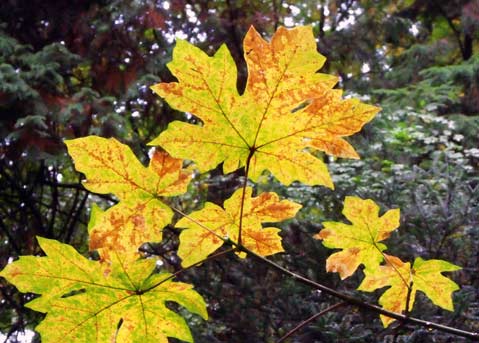Project Budburst
Find a Plant, Write Down What It's Doing, and Report What You See

The fall equinox is here, and everyone is invited to step outside and take a good look at some aspect of plant life. Not just for yourself, but to contribute to a much larger effort to track how plants are responding to their environment. Project Budburst was initiated in 2007 to collect data from all over the country on flowering times, seed production, and leaf drop for any and all native flowers, or even cultivated deciduous trees and shrubs. Seems like a daunting task for sure. What’s revolutionary is the method by which this data will be obtained, and anyone can help in the role of citizen scientist.
The Fall Into Phenology event is designed to amass as many observations as possible from September 17-26. Participants are urged to find a plant, write down what it is doing, and report what they see. Simple! The campaign is ongoing, so contributions are welcome at any time of the year. Go to neoninc.org/budburst/fall/index.php to learn all about it and log an entry.
This citizen-scientist effort is but one of hundreds of similar projects that are designed to extend the reach of research scientists by enlisting the help of observant lay people. One of the oldest of these endeavors is the annual Christmas Bird Count that has been compiled by the Audubon Society since 1900. This initiative and others sponsored by Audubon have been guiding scientists and policy makers for decades. There are bee watchers in Texas (beewatchers.com) who are cataloging the native bees of that state. A recent study of previously unknown post-natal care of baby rattlesnakes by their mothers (and even some unrelated new-mother snakes!) was greatly augmented by observations of a few (brave) citizens who were willing to spend some time just watching and recording the behavior of this species of snake in their neighborhood. Hobbyist star gazers are responsible for the discovery of new stars, the cataloging of types of nebula from photos that no human has ever seen because they were shot by robots, and evidence of new craters on the moon to name a few of their initiatives. Even the measurements of backyard rain gauges can be useful in areas such as Arizona, where official recording stations are spread far and wide. Other weather observations, “official” or not, such as the thickness of snow or ice can add to the overall knowledge base and inform governmental agencies, emergency response teams, and long-term predicators of climate change.
Many of these initiatives serve only to compile and process individual observations. Others actually recruit folks who are using their computers online on a daily basis to join a network of distributed computing to find solutions or support hypotheses already proposed by researchers. These geeky citizens are willing to offer the computational power of their PCs (or Macs, of course) to the collective whole by running diagnostic programs to crunch data behind their daily computing tasks. Whenever their hard drives are spinning and their internet connections are live, their computers are receiving information that needs to be sorted and analyzed. SETI@home (Search for Extraterrestrial Intelligence) is one of the longest running such projects.
These are just a few examples, and many more can be found by searching the Internet. Here are some places to start: scienceforcitizens.net, sas.org, and science.nasa.gov/citizen-scientists.



